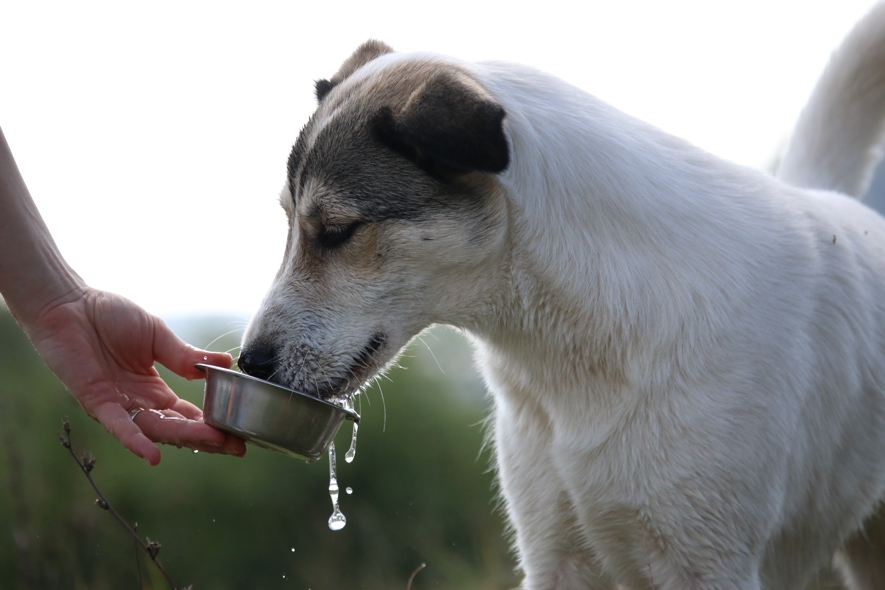Keeping Your Pets Hydrated
- Health
- Dog
- Cat
July is National Pet Hydration Awareness Month which allows pet parents to reflect and reevaluate how we care for our beloved pets. As one of the hottest months of the year, July is especially a time to keep ourselves and our pets hydrated.
A crucial aspect of our pet’s health that often goes unnoticed is hydration. In this post, we will be discussing the significance of hydration, signs of dehydration and tips for keeping your pets hydrated!

Understanding the Significance of Hydration:
Just like we do, our pets rely on water to survive and thrive. Dogs’ and cats’ bodies are made up of roughly 70 percent water, which is vital for all bodily processes. This includes moisturizing the air in their lungs, regulating body temperature, aiding digestion, promoting nutrient absorption, lubricating joints and flushing toxins out of their bodies.
Signs Your Pet May be Dehydrated:
Spotting dehydration can be challenging as the symptoms may not be obvious until it is severe. However, there are some key things to look out for in both cats and dogs that can be an indication of dehydration:
- Dry gums and nose
- Sunken eyes
- Lethargy
- Decreased appetite
- Dark or strong smelling urine
- Vomiting
Cats can also experience urinary blockages from insufficient water intake. If not treated immediately, this can be fatal. Other signs your cat may be dehydrated are:
- Litter box avoidance and/or straining in the litter box and producing little to no urine
- Hiding
- Excessive grooming
- Howling/crying
Tips for Keeping Your Pets Hydrated:
1. Have access to clean, fresh water at all times.
- Make sure that no matter where you go, your pet has access to water. It is recommended to keep your pets water in multiple locations so that they can easily access water especially for pets with mobility issues or those in larger spaces.
- Water should be changed at least once daily and ensure that the bowl is clean.
- For cats, they are curious by nature and this can be taken advantage of to encourage hydration. Place different containers in different rooms and it may pique your cat’s interest.
- Pet water fountains are also helpful for cats as they are attracted to flowing water.
2. Soak dry kibble with warm water.
- Soaking dry kibble with warm water helps to prevent dehydration, brings out the aroma of the meaty fats within the food, increases digestibility and helps with pet weight loss. Only soak for up to half an hour to avoid fermentation of the kibble. This is great for dehydration however please keep in mind that dry kibble aids in maintaining/supporting dental health by the abrasive action of the hard kibble against your pets teeth.
3. Flavoured water, ice treats and cold enrichment snacks.
- Dog-safe tasty liquid can be turned into a frozen treat such as no-salt-added beef or chicken broth.
- Cats also enjoy broth, try adding a small amount of low-fat, low-sodium chicken or beef broth to your cat’s water bowl.
- Frozen ice with a small treat such as a blueberry in the middle will allow for a tasty surprise when your dog licks the ice.
- Treats such as watermelon and cantaloupe chinks are great sweet fruit treats for your dog on special occasions. Keep in mind that fruit should not be consumed in large amounts as they are high in sugar.
- Wrapping dog kibble in a wet towel that is placed in the freezer is a great cold enrichment treat for your pup.
We hope that you found this information valuable and educational, and that these tips help keep your pet hydrated all year long.